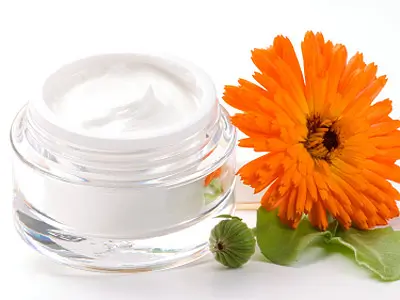
Home made skincare creams
Exfoliating scrub with oats, honey & essential oil
Natural face packs (Face masks)
Home made toners (Facial tonics and astringents)
Air freshening with essential oils
Bathing
Compresses
Floral waters
Foot and hand baths
Massage
Saunas
Showers
Sitz bath
Steam inhalations
Vaporization / diffusing
Home made Skincare creams
A variety of skincare creams can be made at home, ranging from face creams, body lotions, face packs and other skin care products to help you achieve a naturally healthy and younger looking face and skin.
Don’t expect any skincare cream or lotion to show overnight effects. You need to be patient and let your skin regenerate in order to see the difference – and the older you get the longer the cycle of regeneration is. On average you should see results between 28 and 37 days.
Essential oils have various therapeutic properties which add zing to any skincare cream, and some of them have very specialized properties to help with skin conditions. If you have never used essential oils, and are prone to allergic reactions, performing a skin patch test before adding the oil to your skincare cream/lotion may be wise, as a very allergic response will show quickly during this test. It is also important to realise that you do not have to follow a recipe blindly – if you know that you have a very sensitive skin, rather use a lot less essential oil during skincare in the beginning and build up gradually to work out what dilution rate your skin will tolerate.
We provide suggested dilution rates and precautions for use for every essential oil that we sell, so please read up about this on the product page for the specific essential oil/s you are going to use in a skincare product.
When selecting essential oils for facial or body skincare creams and lotions, be very careful when using sun sensitizing essential oils, as they may cause a bad reaction if you go into the sun – expressed (not distilled or ‘CFC’ free) bergamot essential oil is well known to be photo-toxic and has to be very diluted before using on the skin in the sun and there are others, such as expressed grapefruit, angelica root, lemon, lime, mandarin leaf, rue, sandalwood and tagetes.
Base Cream – Olinat Cream or Aqueous skincare Cream
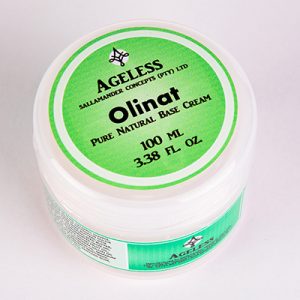
If you do not want to get involved with too much mixing, you can make a simple skincare moisturizer by using a neutral aqueous base skincare cream, obtainable from your pharmacy, druggist or health shop, or use our natural Olinat Base skincare Cream and add your desired essential oils to it.
Do not exceed the recommended dilution of essential oil to the skincare base mixture, since more is not always better, and you could burn your skin with too strong a mixture. Rather start off very carefully and gradually increase the dilution rate if you have a sensitive skin or are adding essential oils that are restricted for use or have a recommended low dilution rate.
Beeswax and oil skincare cream
Below is the recipe for a richer skincare cream than just an aqueous base skincare cream, but please note that it should be kept cool and should not be used for no longer than six weeks.
- Melt 15 g of pure beeswax together with 130 ml sweet almond oil, in a bain-marie, double -boiler, or in a container over boiling water.
- Do not melt the beeswax in a pot on direct heat from a plate on the stove (electric or gas) since it can burn easily and cause a fire hazard.
- Another fixed oil can be used instead of the almond oil, although sweet almond oil does do wonders for the skin.
- Some people are hesitant to use beeswax in skin products, since they think that it will “block the pores” but when used in a mixture like this, not only does it do wonders for softening the skin, it will not cause any problems.
- If you are allergic to bee products, care should be taken when using beeswax.
- While the beeswax is melting, gently warm 50 ml rosewater (any other floral water or distilled water will do) using the same method as above.
- Mix the floral water to the beeswax and oil mixture, mixing it with a whisk or electric mixer. This should be done slowly.
- As soon as a quarter of the water has been added, remove the pot from the bain-marie, and complete the water addition.
When you have finished adding the water the mixture will start to set. Just before it sets, mix in 8 drops of your chosen essential oil/s.
You have now made your own absolutely natural skincare cream!
Exfoliating scrub with oats, honey and essential oil – Skincare for the face
When you look in the mirror and are faced with dull and dry, flaky skin, it may be time to add exfoliation to your skincare routine, to get rid of dead cells clogging up the top layer of skin – to bring the hidden,more youthful looking skin to the top.
Younger people with skin problems should take care not to over-exfoliate, as we have found that those suffering from skin problems think that a daily skincare routine including exfoliating or scrubbing every three or four days, will help to rid their skin of impurities.
This is unfortunately not true, and over-exfoliating or scrubbing can aggravate the problem instead or alleviating it, since the skin will simply become irritated and inflamed.
So – people with a problem skin can use exfoliation in their skincare routine, but gently and not too often, and if in doubt, please consult your licensed medical practitioner and/or dermatologist.
It is considered a good idea to include exfoliation of the skin in a normal skincare routine, as it helps with blood circulation and the removal of the dead skin cells that can cause it to look dull and dry.
We recommend that you exfoliate every 14 days. So add a gentle exfoliation to your skincare routine every two weeks.
Although there are various commercial scrubs on the market, we have found that the following home made scrub is most invigorating to the skin, and is an economical and effective scrub to use in your skincare routine.
Recipe:
Take 2 – 3 teaspoons raw oats (not the pre-cooked type) and crush into smaller bits either by hand or in a grinder. Mix the dry oats with pure honey and 1/4 teaspoon of apple cider vinegar until it forms a smooth mixture. Add more honey as needed. Then add 1 drop of basil oil to the mixture.
For a problem skin, you can replace the basil oil with tea tree oil or niaouli oil to help the healing process along.
After washing the face and drying it gently by patting with a towel, apply this sticky mixture in gentle circular movements. Avoid the eye area. Leave the mixture on for about 15 minutes and wash off with lots of tepid water.
Although it is a messy skincare treatment to perform, the results are excellent and it costs only pennies to make.
Natural face packs (Face masks) for Skincare
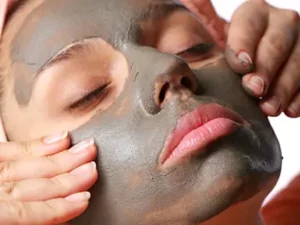
Although it takes some time out of our busy day, we still believe that a face mask, or face pack as some refer to it, is one of the best facial treatments that you can have, for a variety of reasons – cleansing, stimulating, assisting anti-ageing, improving skin tone etc.
Clay masks contain great benefits for the skin, and can be used very successfully in your beauty routine.
Green clay has become the talk of the beauty world, but if it is not available in your area, you can still use the old dependable white kaolin powder.
As a base you can mix either green clay or kaolin powder (reconstituted with either floral water such as rosewater or pure distilled water) together with a little cornflower and a quarter teaspoon of powdered raw oats.
Before applying the mask, make sure that the skin is cleansed properly and dried by patting it with a towel.
After applying any of the masks, leave on for at least 15 minutes while relaxing, and wash off with tepid (lukewarm) water and pat the skin dry. Apply moisturizer.
Normal skincare mask
For a normal skin, mix the clay/kaolin, cornflower and oats together with one beaten egg white and floral water. Add 1 drop geranium oil and 1 drop neroli oil. Mix well to form a paste and apply.
Dry skincare mask
For a dry skin, mix the clay/kaolin, cornflower and oats together with one beaten egg white and floral water. Add 1 teaspoon wheatgerm oil or evening primrose oil plus 1 drop camomile (Roman or German) oil and 2 drops carrot seed oil. Mix well to form a paste and apply.
Oily skincare mask
For an oily skin, mix the clay/kaolin, cornflower and oats together with one beaten egg white and floral water. Add 1 drop lavender oil and 1 drop frankincense oil or juniper berry oil. Mix well to form a paste and apply.
Problem skincare mask
For a problem skin, mix the clay/kaolin, cornflower and oats together with one beaten egg white and floral water. Add 1 drop lavender oil, 1 drop tea tree oil or niaouli oil and 1 drop neroli oil. Mix well to form a paste and apply.
Rejuvenating skincare mask
For a problem skin, mix the clay/kaolin, cornflower and oats together with one beaten egg white and floral water. Add 1 teaspoon jojoba oil, 1 drop camomile oil, 1 drop frankincense oil and 1 drop myrrh oil. Mix well to form a paste and apply.
If you have never used essential oils, and are prone to allergies, we suggest that you perform a skin patch test before using any of them.
Home made toners (Facial tonics and astringents used in skincare)

Toners were traditionally used to remove the oily residue of facial cleansers (mostly cold creams) during a daily skincare routine. Toners commonly contained alcohol to facilitate the removal of oily residue. These toners were drying due to the alcohol.
With modern chemistry, cleansers are very seldom oily or greasy, yet toners do have the effect of toning and refining the skin and need not contain alcohol, since there is no oily residue to remove.
Simple home made toners can easily be created and the skin can be wiped with a cotton ball moistened with the toner after cleansing and this makes part of a good skincare routine.
Method of making home made facial toners for skincare
Place the rosewater/hydrosol/floral water of choice base into a clean glass bottle and add the essential oil of choice. Close the bottle and shake the mixture vigorously to help disperse the oil. A dispersing agent is normally added in commercial mixtures, but since this is freshly home made we will exclude it.
Leave the mixture for at least 36 hours before shaking it again vigorously and then filtering it through a paper coffee filter to remove the larger amount of essential oil. Re-bottle the filtered toner and remember to shake it before use to ensure proper distribution of the mixture.
Toner for dry to normal skin
100 ml rosewater, 1 drop camomile oil, 1 drop geranium oil.
Combine, mix and filter all the ingredients as described above.
Toner for oily to normal skin
100 ml rosewater, 1 drop juniper berry, 1 drop rose otto.
You could consider reducing the rosewater to 90ml and adding 10ml witch-hazel if you have a very oily to normal skin.
Combine, mix and filter all the ingredients as described above.
Toner for normal to sensitive skin
100 ml weak infusion made from chamomile and 1 drop German camomile. The infusion is made exactly as you would make weak, black and bitter tea. You can use a good commercial camomile tea if fresh material is not available.
Combine, mix and filter all the ingredients as described above.
Astringent
25 ml witch-hazel, 75 ml rosewater, 1 drop cypress, 2 drops sandalwood.
Combine, mix and filter all the ingredients as described above.
Air freshening with essential oils

Have you ever felt that you wish that there was an alternative to using commercial air freshener, which always seems to smell the same?
The problem when using a commercial air freshener is the fact that your entire house seems to smell like a bathroom – which is far from desirable.
Well, you can easily and cost effectively freshen the air in any room, and choose from a variety of fragrances available. It is so easy to do, that you in afterthought would be puzzled why you have not done this before.
The core to these air-fresheners are essential oil/s. Although proper and pure essential oils can cost a couple of dollars, you need very little and the rewards are great.
Not only will your room smell fantastic, the pure natural oils extracted from botanical material, will also be of benefit because of the therapeutic effects intrinsic to the oils.
There are literally hundreds of oils to choose from, and we can offer you one of the best selections of oils available in the world, at truly affordable prices – please view our product page to see what we have on offer .
To use essential oils as an air freshener simply do the following
Take a clean plastic spray bottle (used for spraying plants) and half fill it with clean water. You may wish to use filtered or bottled water, to ensure that there are no contaminants are in the water.
Add 8 – 10 drops of a refreshing and uplifting essential oil to the water and shake well.
When you need to perk up a room, shake the bottle and give the room a couple of quick sprays, but make sure not to spray near polished furniture, as the essential oils can damage the polished surface.
Store the bottle in a dark cool area.
Remove cigarette smoke spray
Mix and use a combination of 3 drops rosemary essential oil, 3 drops tea tree oil and 5 drops of eucalyptus in the water spray method explained above.
Remove cooking smell spray
Mix and use a combination of 3 drops peppermint essential oil, 3 drops lavender and 4 drops clary sage in the water spray method explained above.
Bathing

You could simply have a normal bath or a showers, but bathing on a grand scale achieves far more than just cleaning – it helps kick-start your day to help you conquer all, or heals the fragile ego that got bashed about during the day, soothes painfully stressed-out muscles , or it can be a wonderful interlude to a quiet and intimate evening with your loved one – or simply to having a deep relaxed sleep. The therapeutic qualities of essential oils also do much to aid you in your skincare routine.
Precautions to follow when using essential oils in the bath
Essential oils do not mix with water, so you will find that pure essential oils will always float to the top of your bath. The oils will come into contact with your skin in their undiluted form and this may cause irritation – particularly in sensitive areas of the body.
To avoid this, it would be a good idea to first blend your essential oil:
- with your bubble bath mixture,
- or with your favourite carrier or base oil,
- or with Epsom Salts / Salt / Bath Salts (after blending the pure essential oils into a carrier oil BEFORE adding to the Salt/s).
This will dilute the essential oil/s so that you do not irritate your skin.
Please note: we have included recommended dilution rates for each of the essential oils that we sell on the specific product page on our website and have provided a link to the page where we mention the specific essential oil below. When you choose an essential oil that you want to include in your bath, please click on the link to read up on the recommended dilution rate and any precautions that you should be aware of.
Underneath some ideas on having a whale of a time in your water environment, and since we sell essential oils, some ideas on what oils to use for their magnificent fragrance and therapeutic properties.
Mixture to Kick-Start your day
When you getting ready to conquer the world in the morning, you will most probably not be able to spend hours in the bath, but will have a brisk bath at about 70 to 80 degrees Fahrenheit (21 to 27 degrees Celsius) while listening to cheery and uplifting music. The therapeutic qualities of essential oils also do much to aid you in your skincare routine.
If you have some bright and sunny plants or fresh cut flowers (even a single bloom would do) around the bathroom at this time, it will also add to your enjoyment. Prepare a safe mixture (please view ‘Precautions’ above) including the following essential oil/s and add to the bath when the bath water is drawn, as this will help invigorate you for the day and will also provide natural, therapeutic qualities to aid you in your skincare routine:
Healing the fragile ego
Here we would need to get you to relax a bit, and you should have some time to pamper yourself.
The bathwater should be around 95 to 100 degrees Fahrenheit (35 to 38 degrees Celsius) and you could add some bubble bath to create the sensation of being touched when getting into the water.
Instead of a harsh electric light, the softer light of a couple of candles will also make the world look a lot better.
If you could surround yourself with your favorite music, it will help greatly to cheer you up, but stay away from sentimental or sad songs.
Since you need to center yourself, your bath may take about twenty minutes.
It would be a good idea to switch off your phone or to put it on a ‘Do Not Disturb’ setting.
When the bathwater has been drawn, add your safe essential oil mixture (Please view Precautions above).
Consider creating a mixture of the following essential oils (the therapeutic qualities of essential oils also do much to aid you in your skincare routine as well):
Soothe painful muscles
To help relax the muscles, try and keep the bath a bit cooler than what you would normally do at about 98 – 99 degrees Fahrenheit (around 37 degrees Celsius) but when in the bath let hot water in to make it a bit warmer, and have a good long soak.
Make sure that you will be undisturbed.
Some people may find reading in the bath relaxing at this time, but a slightly soggy book works on my nerves.
When the bathwater has been drawn, consider adding a safe mixture (please refer to Precautions above) of your choice of the following essential oils (the therapeutic qualities of essential oils also do much to aid you in your skincare routine as well):
Interlude to an intimate evening
Depending on the day you had – decide if a cooler bath will make you relax, or increase the temperature if you feel you need a warmer bath.
To get yourself in the mood, set the stage with only a candle or two for light and soft sensuous music. If your partner can join you in the bath, and the bath is big enough, it might be an idea to have a shared bath.
When the bathwater has been drawn add a mixture of suitably diluted essential oil (The therapeutic qualities of essential oils also do much to aid you in your skincare routine as well):
To make the bath even more romantic you could scatter a couple of rose petals on the water.
Getting ready for deep sleep
When you want to do nothing else than to simply have a good bath, and crawl into bed, it might be a good idea to have a quick shower to wash and take care of the hygiene, and then get into your relaxing bath for about 15 minutes.
Here you may want to get the water temperature to about 98 to 105 degrees Fahrenheit (37 to 41 degrees Celsius) in which you can wallow for about 15 minutes.
When the bathwater has been drawn, add a safely diluted mixture of the following oils (the therapeutic qualities of essential oils also do much to aid you in your skincare routine as well):
All the above-mentioned oils have therapeutic qualities that will encourage sleep and that will also provide an added boost to your skincare regimen.
So next time when you sit n your bath, spare a thought to the idea that it can be far more of a happening than just simply a cleansing ritual.
Should you suffer from health problems, please take note that some of these baths described above may be too hot for you, since it may increase your blood pressure.
If in doubt, please consult your licensed medical practitioner.
Compresses
This very basic form of treatment entails the folding of a piece of material, bandage or small towel, into a pad wetting it and applying it to the areas to be treated.
Two types of compresses can be used – that being cold or hot, and each of them has a specific place in the treatment of muscular pain, sprains, increasing circulation as well as reducing pain and congestion of the internal organs, relieving lymphatic and fluid congestion.
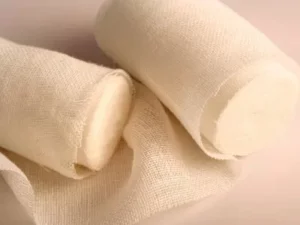
Hot Compresses
Hot compresses are used to treat old injuries, muscle pain, rheumatic pain, menstrual cramps, boils, and toothache.
Making a hot compress
To make a hot compress, take about a pint of hot water, as warm as you can comfortably stand it, and add about 4 drops of your selected essential oil to it. Then place your folded piece of material, bandage or small towel, on top of the water and let it soak it up. Next wring out the excess water and place it over the area to be treated.
Cover the warm compress with either cling wrap or a plastic bag, and another towel on top to keep it in place. You may bandage the compress lightly if applied to an awkward place where it keeps slipping of.
Leave on, and replace with a new compress as soon as it has cooled to body temperature.
Cold Compresses
Cold compresses are used for recent sprains, bruising, swelling and inflammation, fever and headaches. It can also be used as a pep-up when feeling tired.
Making a cold compress
A cold compress is made exactly the same as the hot compress, but ice or refrigerated water is used instead of the hot water, and the compress is replaced when it has heated up to body temperature.
Essential oils and compresses
To select your essential oil for use with the compresses, have a look at the therapeutic properties of the essential oils, and then also view the individual essential oil profiles.
Please note that all serious illnesses must be referred to your licensed medical practitioner.
Floral waters (also known as hydrolats and hydrosols)
The use of floral waters, also known as hydrolats and hydrosols, went out of fashion for a decade or so, but are once again back with us with renewed vigor and are even more popular.
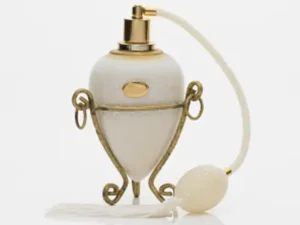
Many retailers and postal supply companies are offering “essential oil water sprays” – but they are not real floral waters. Floral waters cannot be made unless they are part of the distillation process of essential oil extraction.
The re-constituted floral waters so often seen, where small amounts of essential oil is mixed with water plus a dispersing agent added to the mixture – is not a floral water. A tell tale sign of this is if the mixture looks milky, although a hydrosol can be adulterated without showing this telltale sign.
Manufacture of floral water / hydrosols
Floral waters are formed during the extraction process, when the botanical material is subjected to distillation. While the essential oil of the plant material is drawn off and sold as pure essential oil, the remaining water that has been processed through the still contains certain constituents of the plant material, even when filtered and cleaned.
These floral waters contain the water soluble constituents and are largely free of the lipophillic substances that make up the essential oils – such as the hydrocarbons, oxides, esters, ethers etc, yet contain a whole bevy of their own constituents.
It is this filtered water, with the remaining plant and fragrance molecules that are referred to as floral waters, hydrolats or hydrosols.
Although rosewater and witch-hazel are the best known of the floral waters, there are a host of others. Our list below is not complete, but it does indicate the scope of floral waters available.
Please note, we do not sell floral waters, only pure essential oils.
List of floral waters
(the hyperlinks refer to the corresponding essential oils)
| Chamomile | Calming, soothing and relaxing with German chamomile containing anti-inflammatory properties |
| Geranium rose | Balancing and uplifting |
| Lavender | Calming and therapeutic to the skin |
| Neroli (orange blossom) | Energizing and hydrating for all skin types |
| Rosemary | Stimulating and energizing |
| Rose | Soothing to all skin types |
| Sandalwood | Harmonizing and soothing for all skin types |
| Witch hazel | Refreshing and astringent – could be drying for some skin types |
Use of floral water
Floral waters are often used as an ingredient in skincare products – known as ‘skin toners’ and ‘tonics’, yet they on their own can also be used for a quick pick-me-up by simply spraying them onto the skin, or in the air.
Floral waters are also included in some baking recipes and cake decorating icings.
Foot and hand baths
The idea sometimes exists that foot and hand baths are only used by the elderly and the infirm, yet they are wonderful tools to perform treatments on specific areas, and can also be most energizing and relaxing.

When looking at the philosophy of reflexology, you will see that the whole body is represented in the feet, and this might be the reason why so many people experience a whole range of positive effects from having a foot-bath.
When performing your skincare routine, add more zing to your pedicure or manicure by adding a couple of drops of essential oil when soaking the feet or the hands.
Foot and hand baths are a great way to prepare the feet and hands for a massage session, or as a finale to reflexology or pressure massage.
Preparing a foot or hand bath
They are normally prepared with warm water in a bowl large enough for the feet or hands, with a little space free to allow for the water to rise when they are immersed.
After preparing the bath, mix five drops of your chosen essential oil with one dessertspoon of apple cider vinegar and add it to the bath. We find the apple cider vinegar a great way to help disperse the oil, and it also has its own therapeutic properties.
Should you prefer not to use the apple cider vinegar, you could mix the essential oil with some powered milk, and forming it into a paste before mixing with the water, as it also helps to disperse the oil.
However, the apple cider vinegar nor the powered milk is required, and the essential oil can be used directly into the bath.
If you want to add an extra relaxing dimension to your foot bath, you can place marbles or small pebbles at the bottom of the bath and use them to ‘massage’ the bottom of your feet.
Electric foot baths are also great, since they have a massaging action that agitates the water and helps to aerate it, while zinging up circulation.
Should you be performing a foot bath on your own, and you are still lithe enough, you could rest one foot on the other knee and do a gentle massage on each sole, alternating the feet, while busy with the foot bath.
Selecting essential oil for a foot or hand bath
Your choice of essential oil can be purely based on your favorite fragrance, yet essential oils offer a wide variety of therapeutic properties as well, which may be a great way to help treat a specific problem.
Benefits of a foot bath
Foot-baths are great for helping to relieve rheumatic pains and aches, excessive perspiration, revive tired and burning feet (and a tired body) and a great way to pamper your hard-working, and often forgotten feet.
Benefits of a hand bath
Although foot-baths are far more general than a hand bath, they also offer a wide variety of benefits to your often abused hands. A good soak will also help with rheumatism or arthritic pain, ease cramps and are also a good way to give your hands some extra attention.
After the foot or hand bath
After soaking for about 10 – 15 minutes, dry thoroughly and apply a good moisturizing cream, or a little vegetable oil, such as jojoba oil, and maybe a touch of the essential oil that you use in the bath
Massage and aromatherapy
The manipulation of soft tissue is what we refer to when talking about massaging, but with aromatherapy we introduce the power of essential oils into the equation to bring their intrinsic therapeutic properties to the massage.
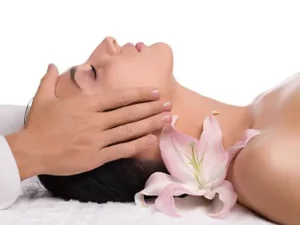
There are various methods of massaging and include the following:
- Swedish
- This method of massaging is the most popular type of massage and includes a variety of strokes that were developed by the Swede, Professor Ling. This type of massage is beneficial to promote the feeling of well-being and also helps to reduce emotional and physical stress.
- Neuro-muscular massage
- This way of massaging forms the basis of aromatherapy massage and evolved from the work of Stanley Leif. It is also referred to as “Trigger point” therapy and the overall effect of this massage is to restore the balance of the autonomic nervous system.
- Lymphatic massage
- This massage helps to improve the flow of lymph and some techniques developed by Marguerite Maury are incorporated in aromatherapy massage. Lymph drainage massage is particularly useful in detoxifying the body and to boost the immune system.
- Acupressure massage and Shiatsu
- This method of massage is focused on the meridians (channels) of the body and to relieve “blockages” through pressure on certain points of the body. It can be performed while the person is fully clothed and requires no needles (hence the term ‘acupressure’).
- Rolfing™
- This technique was developed by Dr. Ida Rolfand focuses on massaging the fascia – the connective tissue enclosing the muscles – to bring the body in alignment again.
Aromatherapy massage

Aromatherapy massage has a more holistic approach to the massage and may include some of the principles on the list above, yet will concentrate on more relaxing strokes, but of prime importance is the selection of essential oil/s used during the massage, since they are chosen for their therapeutic effect, and not the fragrance as such.
To have a look at the therapeutic properties of the oils, please click here, and to view our essential oil profiles please click here.
There are various techniques or strokes and we have listed the most commonly used ones and a short summary of each:
Effleurage (gliding)
Effleurage is the main or principle stroke to warm up the muscles and to prepare the soft tissue for deeper treatment. This free-flowing continuous movement is done with the flat palm of one or both hands with steady pressure.
Fanning
This effleurage motion is used on the back, chest, legs and arms to stretch and manipulate tension away from the muscles.
Feathering
The feathering stroke is an extremely light stroke and is barely perceivable by the person receiving the massage, yet has a profoundly soothing effect.
Petrissage (kneading)
With petrissage specific muscle groups are worked where tissue is easily grasped, and can be performed superficially or deep. Deep petrissage is helpful in promoting circulation and to loosen muscle tightness.
Friction and pressure
Friction is mostly used around joints and helps to increase circulation and the masseur’s fingers do not slide over the skin and in sports massage it is often referred to as cross-fiber stroking.
Vibrating
Using vibrating strokes uses the muscles of the masseur and can take the form of striking the body (especially bony areas) lightly with the fingertips or jostling the muscles (good for sore muscles) where the masseur places his/her hands on the person’s body and shaking his/her hands while moving the hand along the muscle.
Tapotement (percussion)
These alternate drumming movements are normally performed on broad areas of the body, such as the back.
Pummeling
While forming a loose fist strike the body with the outer edge of the hand.
Hacking
Rapid chopping motions are performed with the outer edge of the hand, and the fingers slightly separated so as not to do a karate chop and is used mostly on the fleshy areas like upper shoulders or legs.
Cupping
The hands are cupped and the body is struck with the fingertips and the heels of the palms.
Precautions –
Please do not massage if the person:
- Recently consumed a large meal, alcohol or addictive substances, do not massage
- Underwent surgery, do not massage, unless with the permission of his/her medical doctor
- Suffers from heart attacks or strokes – should at most only receive a very gentle massage to help circulation
- Has cancer, massage should not be performed
- Has a fever or infectious disease, do not massage
- Has varicose veins, do not massage directly over the varicose veins and never massage a person with thrombosis or phlebitis
- Has inflamed joints, gout, arthritic or rheumatoid pain – rather massage above the area and not on the site, as it would be too painful
- If the person is pregnant, first obtain permission from the doctor to massage
Sauna – what is it all about, and are there really health benefits?
A sauna is a dry-heat sweat bath and forms an integral part of alternative health therapies as well as most hydrotherapies in the world today. Most heath clubs and gyms have sauna facilities. The main difference between a Turkish bath and a sauna is the fact that a Turkish bath relies on hot, wet steam – whereas a sauna relies on drier heat.

The heat inside a sauna is normally kept at a steady temperature with a relative humidity of between 15 – 30 percent. The Finns normally keep the humidity in their saunas a bit higher at about 40 percent.
We have included this page in our website, since we do believe that it can be beneficial to a person’s health if used properly, and include some essential oils which could be used to make the sauna experience an even better one.
It must however be noted from the start that some believers in hydro-therapies prefer the use of Turkish or steam baths instead of saunas, as they believe that saunas could be too drying and could cause the skin to age, especially if all the instructions on having a sauna are not strictly adhered to.
With this in mind, we would like to recommend some essential oils for your sauna, before we carry on with the article about the health benefits of a sauna as such.
Most people associate the smell of Eucalyptus with a sauna, but in Finland, the birthplace of saunas, the smell of Birch is associated with them, as Birch logs are traditionally used to fire the saunas.
You will read later, the main purpose of having a sauna should be to help with the elimination of wastes, your choice of oil to use should reinforce this use.
The following oils can be used on their own in the sauna, with the most popular being Eucalyptus, Pine and Peppermint – but Tea Tree, Lemon, Lavender, Niaouli, Clary Sage, Cypress, Rosemary, Lime, Grapefruit and Bergamot are also great.
Should you wish to combine oils, you could look at the following combinations:
- Combination 1
- Sandalwood 10 drops
- Lemon 5 drops
- Benzoin 1 drop
- Geranium 2 drops
- Mix all together and use 4 drops at a time as indicated below.
- Combination 2
- Pine 3 drops
- Rosemary 3 drops
- Niaouli 2 drops
- Bergamot 2 drops
- Grapefruit 8 drops
- Mix all together and use 4 drops at a time as indicated below.
Using essential oils in the sauna
Pure undiluted essential oil must never be placed on the super-heated rocks of the sauna – the dilution to use is to add 4 drops of pure essential oil to 1 liter of water, and then to use this fragranced water when dousing the rocks in the sauna.
It is generally accepted that sauna baths originated in Finland, although sweat therapy or sweat baths are part of many cultural or folk medicines.
The logic behind the health benefits of having a sauna, is that sitting in a heated sauna would simulate an artificial “fever” and in so doing stimulate the immune response of the body, which in turn would speed up the production of white blood cells – some studies have shown a remarkable increase during “artificial fevers”.
It furthermore is supposed to help the production of interferon in the body. Interferon is an anti-viral protein that has powerful cancer fighting properties.
In European hydrotherapy a sauna is normally used before a body massage, to prepare the muscles by “loosening” them and making them more supple for the massage.
This order is reversed in America, as well as in the Indian Ayurvedic system, where the massage is normally followed by a sweat bath to assist with eliminating toxins that might have been dislodged during the massage session.
Since a sauna also speeds up the chemical processes in the body, it is also a favorite way to help clear the body of accumulated toxins. Not only does it speed up the body processes, but also perks up the working of the skin, which as the largest organ is important for waste removal, and in so doing stimulates sweating, and helps remove waste products. It is with this same logic that body-wraps are used.
During a 15 minute session in a sauna, the average person can lose between 0.5 – 1.5 liters of water, and it is therefore essential that people drink water before and after a sauna to prevent dehydration.
People that feel a cold or flu starting, have reported that they can ward off the manifestation of the actual symptoms by taking sauna baths. This may however not be a good idea for all people since a hot sauna may place strain on the heart.
Taking a sauna will increase your heart rate and although it is claimed by some that it only increases the heart rate, and not your blood pressure, we would advise people that have elevated blood pressure not to have a sauna before checking the advisability with their medical practitioner.
During a sauna the capillaries dilate, increasing the flow of blood to the skin and it is this increased capillary volume which some alternative practitioners believe helps to keep blood pressure “normal” during a sauna. It must however be stressed that people with high blood pressure should not take a sauna without the permission of their licensed medical practitioner.
The temperature during a sauna increases the skin temperature by about 10 degrees Celsius and the body temperature by about 3 degrees Celsius – the so called “artificial fever”. Many alternative practitioners believe this helps to kill off unwanted bacteria and viruses, and also gets the body to move its immune system into a higher gear.
While having a sweat session, your body will also require more oxygen, and an increase of up to 20 percent is reported, and with this greater demand on the lungs more wastes can be expelled.
Should the air be too dry in a sauna – as in most American saunas – the mucus membranes of the lungs may become dry and damaged, and for this reason it is best to ensure that some form of humidity is maintained.
Some of the positive effects of a sauna are also attributed to the fact that splashing water on super heated rocks causes a lot of negative ions to be formed in the air. In Europe and the Soviet Union, research has been done that indicates that negative ions are conducive to promoting health and assist in remedying various health problems.
Unfortunately, some of the electric saunas in America do not heat the rocks enough, and the reverse is achieved with more positive ions being formed – which is exactly the opposite effect you want to achieve.
Another interesting fact about a sauna is that the heat helps the body to get rid of lactic acid which is formed during exercise, and for this reason it may be a good idea to have a sauna after a particularly heavy training session. But remember to first wait awhile after exercising and to have a cool shower before entering the sauna.
After having their sweat bath, Finnish people normally have a heart stopping plunge into ice cold water, and although proponents of this practice swear by the positive effects it is supposed to have on your health, we would caution people to not follow this technique unless they have very strong constitutions.
In some spas in the world, people are treated to a cold hosing-down after a sauna, and although this is less of a shock than a plunge into ice cold water and is very invigorating, it should not be practiced by people that are prone to asthma attacks. People suffering from asthma should also not sauna without first consulting their medical practitioner.
Some notes on sauna safety
People normally have a cool shower after a session in the sauna, and this should be followed by a resting period of about 20 – 30 minutes before entering the sauna again.
No food should be eaten before a sauna or during a session, but enough water must be taken in to replace the water lost through the induced sweating.
Saunas are also not indicated for pregnant women, children or elderly people, or for people suffering from pneumonia, any other respiratory diseases,
Should you have an open wound, or feel feverish, do not sauna.
If you have any health concerns, first consult your licensed medical practitioner before using a sauna.
Showering your way to cleanliness and emotional equilibrium
To have a cool bracing shower is one of the best ways to start the day, and a longer and warmer shower is a great way to wash the problems of the day away. It is not only the running water that has this effect, but the generation of negative ions with the water falling, also has a positive effect on your well-being.

Most people prefer to shower because of the time saving aspect, but in Japanese bathhouses patrons first have a shower to clean themselves before enjoying the deeply relaxing (and tiring) bathing ritual.
Although our quest is to get clean in the shower, we can however add another dimension to this.
After your regular wash, put two to three drops of your favorite essential oil on a facecloth or sponge and give your body a quick rub-over while standing in the running water and inhaling the fragrance.
Another good idea is to use a normal wooden peg (for hanging washing). Connect the wooden peg to a surface in the shower (perhaps the side of the shower head or a shelf, if possible) and drop a few drops of your favourite essential oil onto the wooden parts of the peg – the volatile aroma of the essential oil will be activated by the warm steam of the shower and you will be able to inhale the fragrance for its therapeutic benefits.
Fragrance therapy with inhalation
Fragrance therapy also has an influence on various parts of your body and general well-being, and in this therapy, the olfactory bulb is stimulated and the limbic system is activated.
For this reason we advise that you use an oil you find pleasant, since hedonics come into play in the way your body will react.
Please look at our safety information.
Sitz bath and essential oils
Sitz baths are used to specially help treat problems in the pelvic and genital areas, although proponents of hydrotherapy would recommend it as a general tonic as well.
A sitz bath, or hip bath, is normally undertaken in a custom built bath, but can also be taken in a normal bathtub.
The addition of suitable essential oils can further enhance the experience of a sitz bath, but be sure to to create and add a safe and diluted mixture of essential oils before immersion, as this will prevent the oil from irritating mucous membranes.
Tea Tree Oil or Niaouli Oil are popular oils to add to a sitz bath since they have some great properties, but any oil can be chosen for its specific therapeutic benefits.
To select an oil for your specific needs, click here to have a look at the most suitable essential oil.
When taking a sitz bath, the lower abdominal and genital area is submerged, but the upper part of the body and the legs are raised out of the water.
This particular type of bath is used to help increase blood flow to the pelvic area.
Hot sitz baths
A hot sitz bath is taken in warm water of 95 – 105º F / 35 – 41º C, with the water level not higher than your navel.
Beneficial for:
- hemorrhoids (haemorrhoids, piles)
- muscular problems
- painful testicles
- painful ovaries
- uterine cramps
- prostate problems
Cold sitz bath
In a cold sitz bath, water of only a few inches deep is used and should not be colder than 68º F / 20º C.
Beneficial for:
- constipation
- impotence
- inflammation
- vaginal discharge
Hot and cold sitz bath
You can also take alternate hot / cold sitz baths, where you will stay in the hot bath for 3 – 4 minutes and then have a cold sitz bath. When finishing a cold / hot sitz bath, finish off with your pelvic area in the cold bath.
Beneficial for:
- abdominal disorders
- congestion
- headaches
- neuralgia
- swollen ankles
General
A sitz bath is normally taken for about 20 – 30 minutes, and water is normally added to maintain the temperature.
Some people prefer to take cold sitz baths using ice water, but the length of such a cold sitz bath in ice water must not be done for longer than 60 seconds (1 minute).
To select the essential oil for your sitz bath, please have a look at our list of products.
Steam inhalations with essential oil
When steam and essential oils are combined they form a very potent mixture to help treat some ailments, especially those of the upper respiratory tract, nose and sinuses. This type of treatment should not be used by anybody suffering from asthma.

This type of treatment can be effective when you are suffering from a cold, wheezing chest, sinus discomfort etc. – but remember if you have a medical problem, please contact your licensed medical practitioner.
We have listed some conditions below, with corresponding essential oils that may be of help. You could use a single oil, or you can combine oils – it all depends on personal preference, and what works for your particular problem.
Breathing difficulties
Bronchitis
Colds
Coughing
Sinus
Instructions to do steam inhalation
Pour hot water into a bowl on a firm surface or table. Then add 3 drops of the essential oil that you have selected. Place your head about 12 inches (30 cm) above the bowl and cover your head with a towel in such a way that the sides are totally closed and you in actual fact form a ‘tent’ around your head and over the bowl.
Keep your eyes shut and breathe deeply through your nose for 1 to 2 minutes.
If you feel that the treatment is getting too much for you, raise the towel so that fresh air is brought into the area and breathe through your mouth a couple of times and then resume the treatment. Should you at any time feel uncomfortable, discontinue the treatment.
When using this treatment with children or elderly people make sure that they do not burn themselves by getting too close to the bowl, or that the hot water is spilled, as burns could result.
Vaporization / diffusing of essential oils
This must be one of the most enjoyable applications of essential oils, and involves vaporizing the oils in a variety of devices into the air that we breathe. This differs from having synthetically fragranced potpourri placed around a room, since with essential oil vaporization, you get the benefit of a fragrant smelling room, and the benefits of the therapeutic effects of the essential oils.

The most common way of vaporizing a room is to add the essential oils to a vaporizer which comes made in different materials – from ceramic, terra- cotta, metal and glass etc – all with two separate containers – the top one for water and essential oils (or crystals and essential oils) and the bottom one housing a candle to provide the gentle heat. Click here to see one of these types available on Amazon (#ad).
Vapor therapy can also be as simple as dropping some essential oil onto a tissue or handkerchief and smelling it at intervals throughout the day
When buying a vaporizer opt for one with a large top reservoir – it will help as you would not need to constantly top it up with water and essential oil. The general rule is about 6 – 8 drops of essential oil to the water in the top reservoir, but that will also depend on the size of the room.
As soon as the candle;heating device starts to heat up the water above it, the essential oil in the water will start to evaporate and the aroma will dissipate.
Use this type of vaporizer with care when around children or elderly people, if you are using a candle, a candle is an open flame, and the water in the reservoir can get quite hot.
An alternative to the candle type of diffuser is to use an electric or ultrasound diffuser. See a sample here (#ad).
Light-bulb rings are also useful, and are available in ceramic as well as metal. The oils are placed on the ring, and the ring is then placed on a cold, turned-off light bulb (usually on an upright table lamp). As soon as the light-bulb is switched on, the essential oil starts to evaporate and the aroma dissipates. These only work on incandescent light bulbs. Click here for this type of diffuser available on Amazon (#ad).
Cupboards and Drawers
Place a few drops of essential oil on a small ball of cotton wool, and then place the cotton wool ball in a cupboard or drawer – but take care that it does not touch your clothes, since the oil may stain.
Some people use this method to keep fish moths and other undesirable insects away from their clothes and to add a fragrance to their clothes cupboards. An oil often used to combat fish moths is clove oil, and although strong smelling is a very nice fragrance to have in your cupboards.
Vaporization and fragrance therapy

Since essential oils have their own therapeutic benefits, they are used in fragrance therapy, and although this may be a slightly controversial subject, research has shown some very interesting results when essential oils are diffused in the air.
Vaporizing the essential oils forces the molecules to become airborne, where we then can benefit in two ways – we trigger our limbic system through our smell sensation by means of the olfactory bulb, and we can absorb them when we breathe them into our lungs, where they are also absorbed by the body.
The benefits of vaporization is to help with
- Respiratory tract problems
- Treating throat infections
- Eliminating catarrhal conditions
- Relieving mental and physical fatigue
- Reducing tension and anxiety
- Calming the nervous system
- Reducing Blood Pressure
